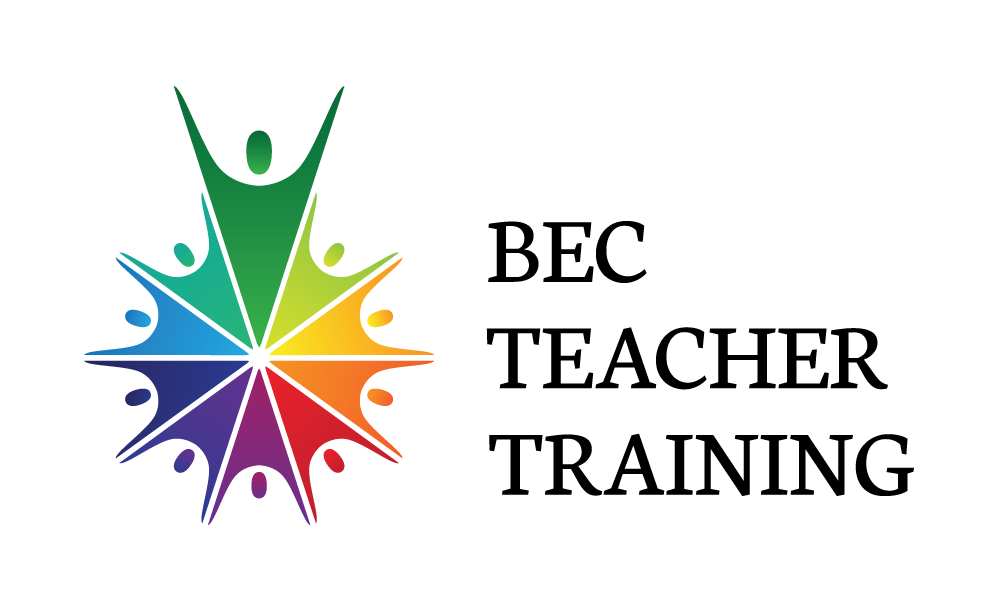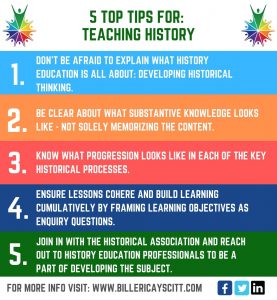Here are 5 top tips for teaching History:
- Don’t be afraid to explain what history education is all about! History as a subject exists on two separate planes. For most people teaching history is about focusing on past people and events, a passing on of traditions from one generation to the next, and the notion of sitting at the feet of our grandparents and being connected to those long gone. However, here at BEC, we believe that teaching history exists on another plane. It is a discipline, a mode of thinking that, “…is neither a natural process nor something that springs automatically from psychological development . . . it actually goes against the grain of how we ordinarily think.” (Wineburg, 1999). It engages with the complexities of the past. History education lies in this second plane. It aims to develop students’ historical thinking.
- Be clear about what substantive knowledge looks like (it’s not just about content or information!).
- Clear, coherent narratives concerning people, institutions, places or events.
- Small-scale human stories make larger-scale historical stories, events or changes meaningful and memorable, and conversely, macro-stories are conveyed through generalisations and categorisations.
- Chronological frameworks e.g. of historical periods, rulers in sequence etc.
- General ‘sense of period’ that helps students avoid anachronism.
- Specific ‘sense of period’ that facilitates the assimilation of smaller narratives or case studies.
- Knowledge acquired of historical periods, events or individuals that provides context for the study of a different period, event or individual
- Appropriate period resonances are attached to substantive concepts such as ‘Parliament’, ‘Church’, ‘federalism’, ‘loyalty’ or ‘taxation’.
- Know what progression looks like in each of the key historical processes.
- Causal reasoning (explaining why it happens and its impact, i.e. cause & effect).
- Evidential thinking (being able to understand, infer from, cross reference, analyse, critically evaluate, and deploy the evidence historians use).
- Change & continuity (identify and explain how and why change/continuity occurs over time).
- Diversity (people in the past are not all the same),
- Interpretation (identify, explain and analyse the reasons why historians’ views about things constantly change).
- Significance (what do we think is historically important, how do we decide).
- Ensure lessons cohere and build learning cumulatively by framing learning objectives as Enquiry Questions. Does your question:
- Capture the interest and imagination of your pupils?
- Place an aspect of historical thinking, a concept or a process at the forefront of pupils’ minds.
- Result in a tangible, lively, substantial, enjoyable ‘outcome activity’ through which the students can genuinely answer the enquiry question.
Don’t reinvent the wheel!
There is a huge and supportive community of professionals teaching history out there, be a part of developing your subject. Join in with the Historical Association, Schools History Project, and become an examiner!
Click here to see the infographic!
Discover more of our top tips on our blog page!
If you or anyone you know is interested in teaching history you can find the best routes into teaching here and reach out to our friendly team here.



